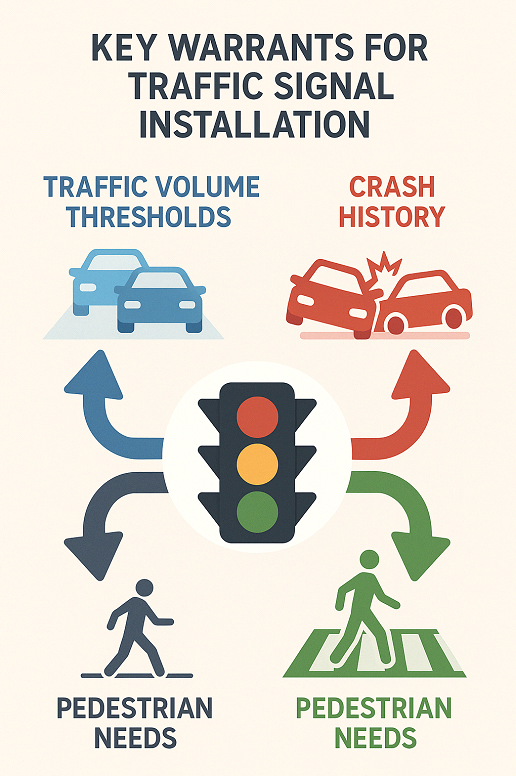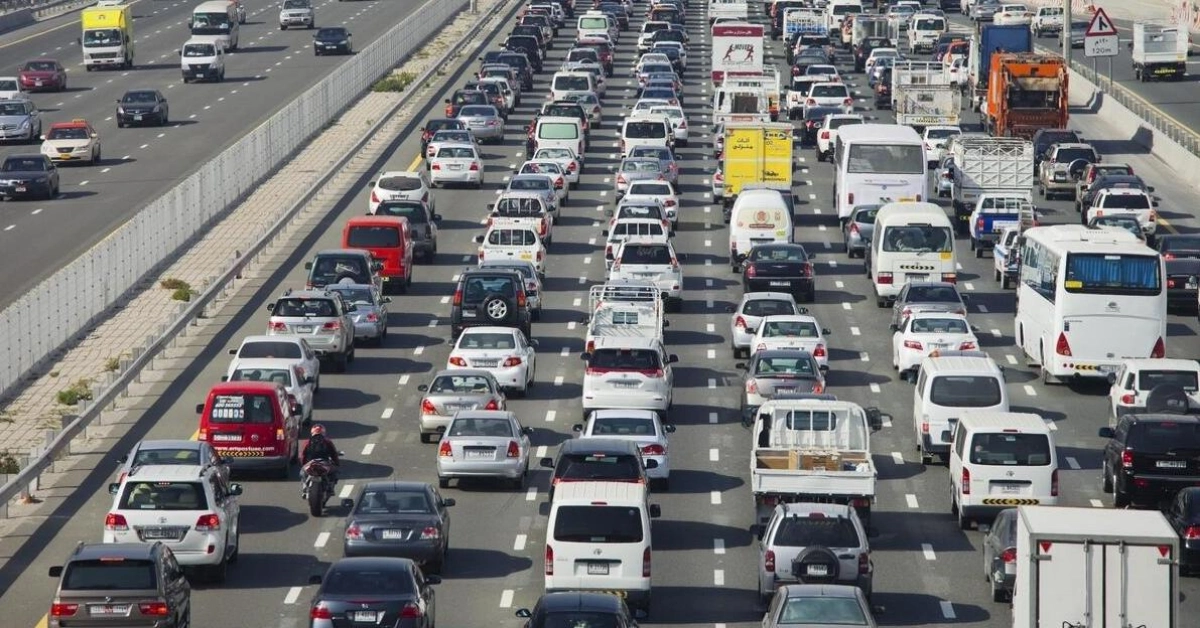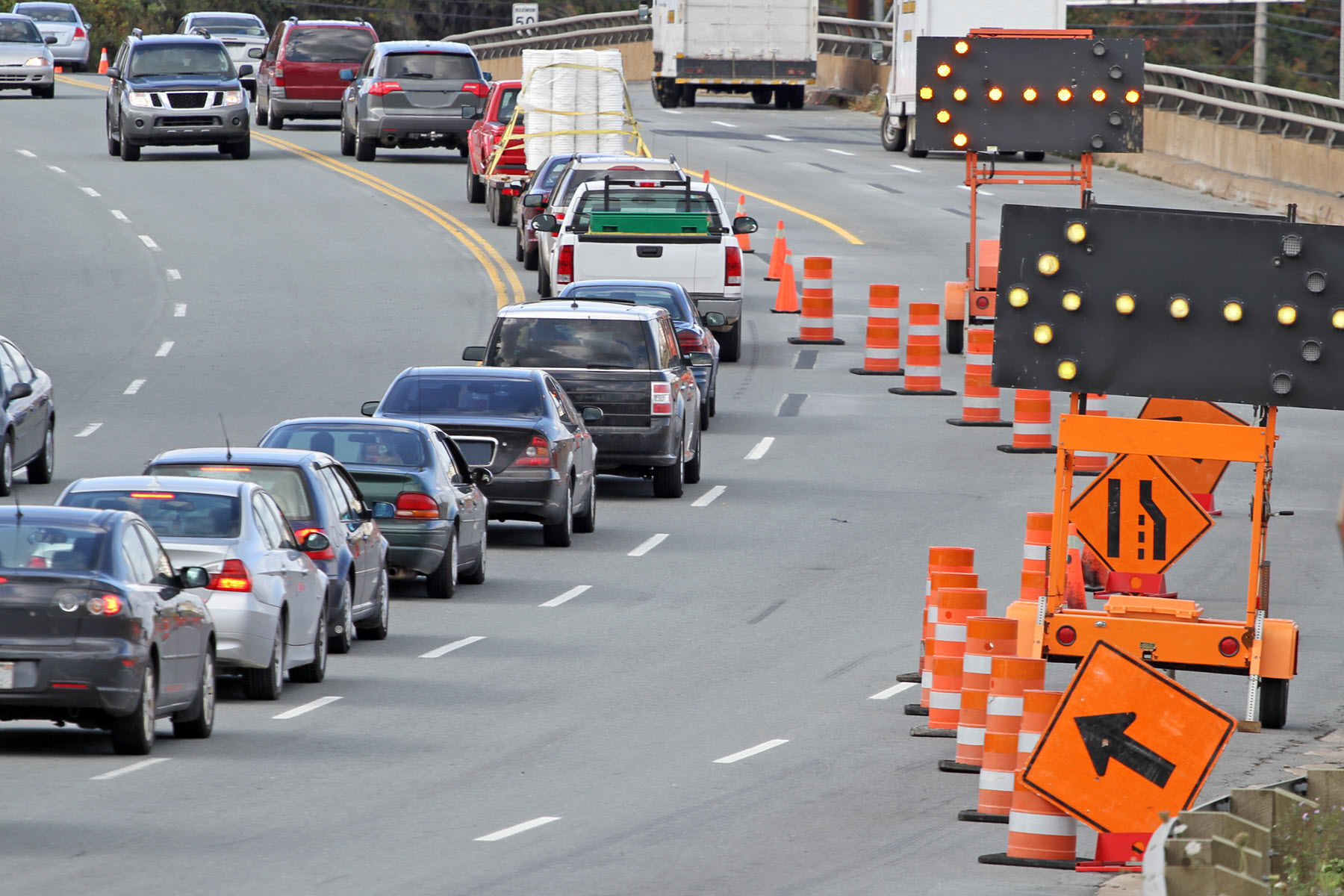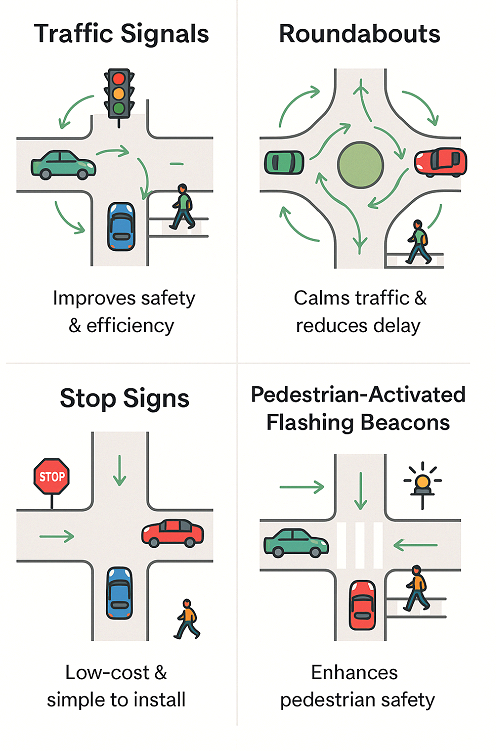
Traffic signal installation is typically guided by defined warrants. Warrants are specific criteria used to determine if a signal is justified based on conditions at an intersection. Meeting one or more of these warrants does not automatically result in installation but supports further evaluation.
A common warrant involves minimum traffic Control Devices And volumes on major and minor roads. When volumes reach a level that causes excessive delay or difficulty in crossing or turning, a signal may be considered. Volume-based warrants ensure that signals are placed where traffic flow demands coordinated control. Engineers assess peak-hour counts, daily totals, and directional distribution to determine if thresholds are met.
Crash data is also used to assess the need for a signal. Intersections with a pattern of collisions, particularly angle or turning crashes, may benefit from signal control. Among other traffic control devices, signals are often considered when specific crash types are identified as correctable. The presence of correctable crash types supports the consideration of a signal as a countermeasure. Engineers review multiple years of crash records to identify trends and determine if a signal would likely reduce incidents.
Pedestrian movement across busy roads may justify signal installation. If crossing is difficult due to continuous traffic or long wait times, and pedestrian volumes meet established thresholds, a signal may be warranted. School zones, areas near transit stops, and senior centers often fall under this category. The ability to provide safe pedestrian phases is a key consideration.
Meeting a warrant initiates a broader evaluation. Engineers and planners assess whether a signal is the best option or if other solutions could meet the same goals.
Detailed studies are conducted to evaluate conditions at the intersection. These include turning movement counts, pedestrian counts, delay measurements, and queue lengths. Time-of-day analysis helps determine if problems are constant or occur only during specific periods. Software models may simulate traffic conditions with and without signal control. As part of broader traffic engineering strategies, these evaluations aim to optimize intersection performance and reduce delays.
In addition to technical analysis, engineers assess geometric design, sight distance, and visibility. If a signal is installed, proper placement and phasing plans are developed to manage flow efficiently.


Public input and local concerns can influence the decision-making process. Residents, business owners, and local officials may provide information about safety concerns, travel patterns, and pedestrian needs that may not be reflected in the data alone. While not the sole basis for signal installation, community feedback helps shape priorities and planning.
While traffic signals provide structure and improve safety in many cases, they are not always the best solution. Improperly installed or unnecessary signals can cause new problems.
Signals can introduce delays where traffic once flowed freely. If volumes are low or unbalanced, drivers may experience long waits for green lights, especially during off-peak hours. These delays may lead to driver frustration and non-compliance. In some cases, signals may actually reduce intersection capacity rather than improve it.
While signals can reduce right-angle crashes, they often lead to an increase in rear-end collisions. Drivers may not anticipate sudden stops, especially when approaching a yellow or red light. Frequent stopping and starting can contribute to a pattern of low-speed crashes. Signal timing and visibility are critical to minimizing this effect.


Before installing a signal, engineers consider alternative measures. These options may improve safety and flow without the potential downsides of full signal control.
Roundabouts offer a non-signalized method of managing intersections. They reduce conflict points, lower vehicle speeds, and typically result in fewer severe crashes. Roundabouts can be effective replacements for signals, especially at intersections with moderate traffic volumes and a history of angle collisions.
In low-volume settings, stop signs or yield signs may be sufficient to manage right-of-way. These options are less costly and may create fewer delays than signals. Engineers evaluate the suitability of these controls based on sight distance, approach speeds, and crash history.


Documented examples highlight how well-planned signal installations have enhanced safety and efficiency. At high-crash intersections, signals have reduced angle collisions by creating predictable crossing patterns. In school zones with heavy pedestrian activity, new signals have improved crossing safety by giving pedestrians dedicated time to cross.
In urban corridors, coordinated signal systems have been used to manage congestion and improve travel times. By synchronizing signals based on traffic flow, cities have reduced delays and emissions, especially during peak travel periods.
Each case reflects the importance of data-driven decisions, proper engineering, and attention to context. Where signals are justified and well-executed, they contribute significantly to transportation safety and reliability.
Traffic signals should be installed only after careful analysis of traffic conditions, crash history, and pedestrian needs. Warrants such as traffic volumes, collisions, and crossing difficulty guide the evaluation process. Engineering studies and community input further shape the decision.
Signals offer benefits when properly placed, including improved safety and organized movement. However, they also carry risks, such as increased delays and rear-end crashes, if used inappropriately. Alternatives like roundabouts and flashing beacons may offer better solutions in certain contexts.
Sound engineering judgment, adherence to standards, and a balanced approach help ensure that signal installations support both safety and efficiency.
I provide attorneys and insurance adjusters in Mesa, AZ with the technical expertise they need in cases involving traffic accidents, roadway design, and traffic control.